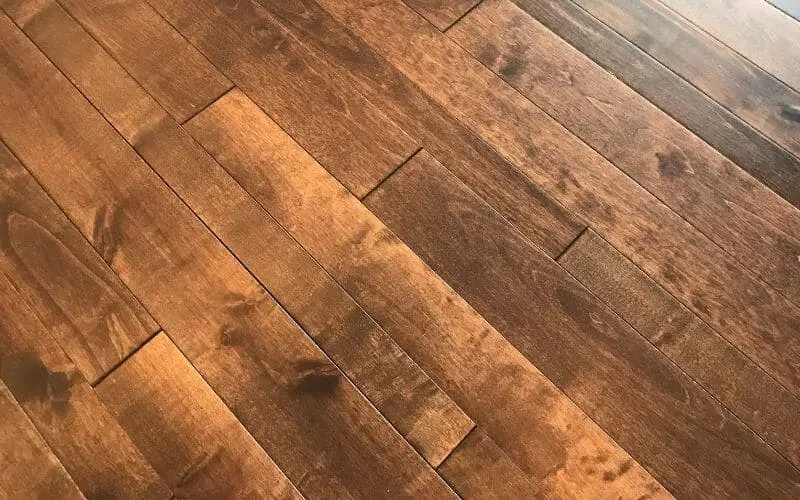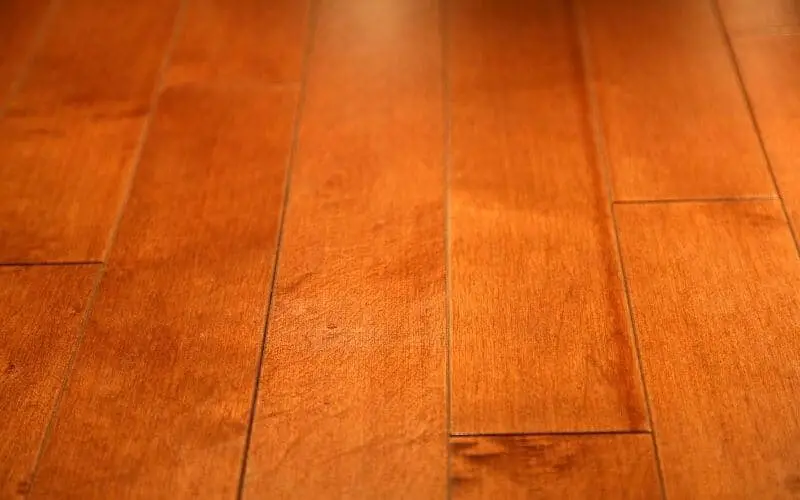There’s nothing more annoying than your floor ratting you out during your 2 am snack heist. It is common to encounter squeaky floors in older homes but your newly installed hardwood floor can also become squeaky.
This is often due to loose wooden floorboards but even if your floor is carpeted it can still become noisy if the plywood subfloor isn’t firmly attached to the joists.
This is irritating and annoying but fortunately, there are ways to fix this. This article will guide you on how to fix squeaky hardwood floors with baby powder.
How to Fix Squeaky Hardwood Floors With Baby Powder
Table of Contents
Silencing squeaky floors with baby powder is straightforward and relatively inexpensive, but there are also other ways to fix a squeaky floor.
When the space underneath the floor is finished and the floor joists or subfloor is inaccessible, it can be quite difficult to eliminate to fix its noisiness. To fix such floors, you will need to add a dry lubricant like baby powder to the problem area.
Aside from baby powder which is also talcum powder, you can make use of dry lubricant or powdered graphite for this fix. This is yet another effect method on how to fix squeaky hardwood floors from above
Apply the baby power into the joints between the floorboards and place a cloth over the boards, then walk over the area a couple of times back and forth, this will help to work the powdery lubricant down into the cracks.
Applying baby powder to your hardwood floor will help to reduce wood-on-wood friction between the planks thereby silencing the squeaks. Use a vacuum cleaner or damp cloth to remove any remaining baby powder from the floor.
When using a dry silicone lubricant, all you need to do is spray it between the squeaky floorboards. Then wipe off any excess lubricant using a clean cotton cloth or paper towel that has been slightly dampened.
Using Other Methods to Fix Squeaky Hardwood Floors
Cover Gaps With Shims
If you have access to the space underneath your floor via a basement or crawl space, dealing with a squeaky floor is a lot easier.
Go underneath the room with the squeaky floor then have someone walk across the floor slowly. Listen for a squeaking sound, when you hear it, ask the person to stop and step on the area again.
After you pinpoint the exact area of the squeaking, inspect the area for the presence of any gap between the top of the floor joist and the underside of the subfloor.
Remove some insulation if you need to get a better view. Once you spot a visible gap, spread some carpenter’s glue onto a thin wood shim and push it into the gap.
Avoid hitting the shim with a hammer or forcing it in too far; this might cause you to accidentally raise the subfloor, which will create a hump in the floor above.
Placing a shim in the gap will help to fill the void and prevent the floor from moving up and down, which is the main cause of squeaking.
Repeat the above process and insert shims into every spotted gap. Also, ensure to check both sides of the joist at every squeaky spot. Keep in mind that sometimes the gap may only visible on one side of the joist.
Allow the glue to dry completely, then trim the shims flush with the joists by using a utility knife to score them then snap them off.
If you used a thick shim that is difficult to score and snap, you can use an oscillating multi-tool fitted with a plunge-cutting wood blade to trim it.
Read: How to fix hardwood floor gap
Fill Gaps With Construction Adhesive
A wood shim is most effective at silencing an isolated squeak in a small region, a long gap that runs through the length of a floor joist would be too large to be fixed with a wood shim unless you want to install a whole series of shims, which isn’t the best idea.
Instead, use a thick bead of fast-set construction adhesive to cover long gaps and cracks. Force the adhesive directly into the space between the top of the joist and the underside of the subfloor using a caulking gun.
Inspect both sides of the joist for cracks and gaps. If you notice a gap on any side, cover it with adhesive, as well. Once the adhesive is applied and dries, it’ll stop the floor movement and also the creaking noise.
Read: How difficult is it to replace floor joist?
Install a New Floorboard Along The Warped Joist
If your floor joists were installed wet, they can occasionally twist, warp, bow, or shrink. This causes a space to open up between the joist and the plywood subfloor and the movement of flooring and subfloor when someone walks across the floor, all of which causes the squeaking sounds.
To fix this problem install a long Douglas fir 2×4 alongside the problem joist. First, apply a continuous bead of construction adhesive on the top edge of the 2×4.
Then press it flat against the joist before sliding it up against the underside of the subfloor tightly. Use a hammer to lightly tap on the bottom edge of the 2×4 several times, this is to ensure it’s securely against the subfloor. Then, use 3-inch drywall screws with no more than 8 inches of space between them to secure the 2×4 to the joist.
Read: How to fix wood floor cupping
Add Solid Blocking to Floor Joists
Installing solid blocking in between the floor joists is another effective way to fix squeaking noise. Cut the blocking from a dimensional lumber that is the same size as the joists. So if your home has 2×8 floor joists, you need to cut the solid blocking from a 2×8.
Cut out two or three blocks that fit perfectly between the two joists. Then apply a bead of construction adhesive on the top edge of each block.
Space the blocks along the length of the joists, before sliding them up tightly against the underside of the subfloor.
Drive 3-inch drywall screws into the sides of the joists and the ends of the blocking to fasten the blocking securely.
Read: How to install baseboard molding on uneven floor
Install Short Screws Into the Flooring
If the squeaks originate from between the joists, then it is most likely caused by the wooden floorboards rubbing against the underlying plywood subfloor, or against the nails that are used to hold down the floor.
You can stop the floor movement and eliminate squeaks by driving short screws into the underside of the subfloor and underneath the finished flooring.
However, you need to be very careful and avoid screws that are long enough to penetrate through the top of the finished flooring. Using such screws will cause a much worse problem than a few squeaks.
So be on the safe end, and drive the first screw into an inconspicuous area, like inside a closet, then go check the room to see if the screw poked through the floorboard’s surface.
Conclusion
This article discusses how to fix squeaky hardwood floors with baby powder as well as other effective methods. A squeaky floorboard can be a source of a great deal of noise, this is why most people are quick to look for a fix when their floors start squeaking.

